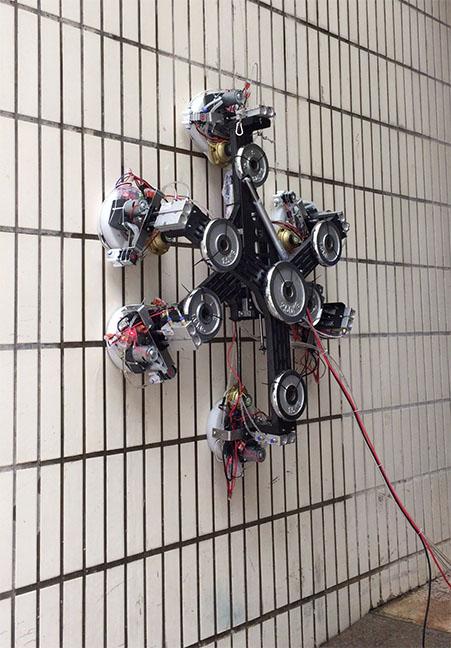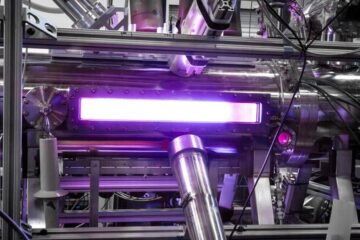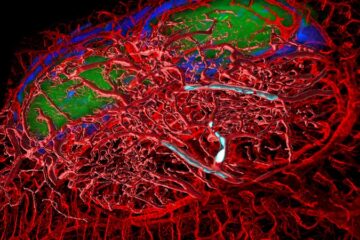Spider-Man-style robotic graspers defy gravity

A wall-climbing robot uses the zero-pressure difference method to form suction. Credit: Xin Li and Kaige Shi
Specially designed vacuum suction units allow humans to climb walls. Scientists have developed a suction unit that can be used on rough surfaces, no matter how textured, and that has applications in the development of climbing robots and robotic arms with grasping capabilities.
Traditional methods of vacuum suction and previous vacuum suction devices cannot maintain suction on rough surfaces due to vacuum leakage, which leads to suction failure.
Researchers Xin Li and Kaige Shi developed a zero-pressure difference (ZPD) method to enhance the development of vacuum suction units. Their method overcame leakage limitations by using a high-speed rotating water ring between the surface and suction cup to maintain the vacuum. They discuss their work in this week's Physics of Fluids, from AIP Publishing.
“There are many applications of our design, but we think the wall-climbing robot will be the most useful,” said Li. “Compared to other wall-climbing robots, the robot with our ZPD-based suction unit achieves surprising improvement in performance.”
The centrifugal force of the rotating water eliminates the pressure difference at the boundary of the vacuum zone to prevent vacuum leakage. It can maintain a high vacuum pressure inside the suction cup.
Their ZPD suction unit is energy-efficient and smaller and lighter than traditional suction units. The researchers tested their unit with three different suction sizes and applications: on a robotic arm to grip and handle objects, on a hexapod wall-climbing robot and as a Spider-Man-like wall-climbing device.
“The next step in this research is to cut down the water consumption. If the water consumption can be reduced, the suction unit will work for a very long time with little water so that the wall-climbing robot could carry its own water instead of being connected to a supply,” said Li.
###
The article, “Vacuum suction unit based on the zero pressure difference method,” is authored by Kaige Shi and Xin Li. The article appears in Physics of Fluids (DOI: 10.1063/1.5129958) and can be accessed at https:/
ABOUT THE JOURNAL
Physics of Fluids is devoted to the publication of original theoretical, computational, and experimental contributions to the dynamics of gases, liquids, and complex or multiphase fluids. See https:/
Media Contact
More Information:
http://dx.doi.org/10.1063/1.5129958All latest news from the category: Physics and Astronomy
This area deals with the fundamental laws and building blocks of nature and how they interact, the properties and the behavior of matter, and research into space and time and their structures.
innovations-report provides in-depth reports and articles on subjects such as astrophysics, laser technologies, nuclear, quantum, particle and solid-state physics, nanotechnologies, planetary research and findings (Mars, Venus) and developments related to the Hubble Telescope.
Newest articles

Zap Energy achieves 37-million-degree temperatures in a compact device
New publication reports record electron temperatures for a small-scale, sheared-flow-stabilized Z-pinch fusion device. In the nine decades since humans first produced fusion reactions, only a few fusion technologies have demonstrated…

Innovative microscopy demystifies metabolism of Alzheimer’s
Researchers at UC San Diego have deployed state-of-the art imaging techniques to discover the metabolism driving Alzheimer’s disease; results suggest new treatment strategies. Alzheimer’s disease causes significant problems with memory,…

A cause of immunodeficiency identified
After stroke and heart attack: Every year, between 250,000 and 300,000 people in Germany suffer from a stroke or heart attack. These patients suffer immune disturbances and are very frequently…





















